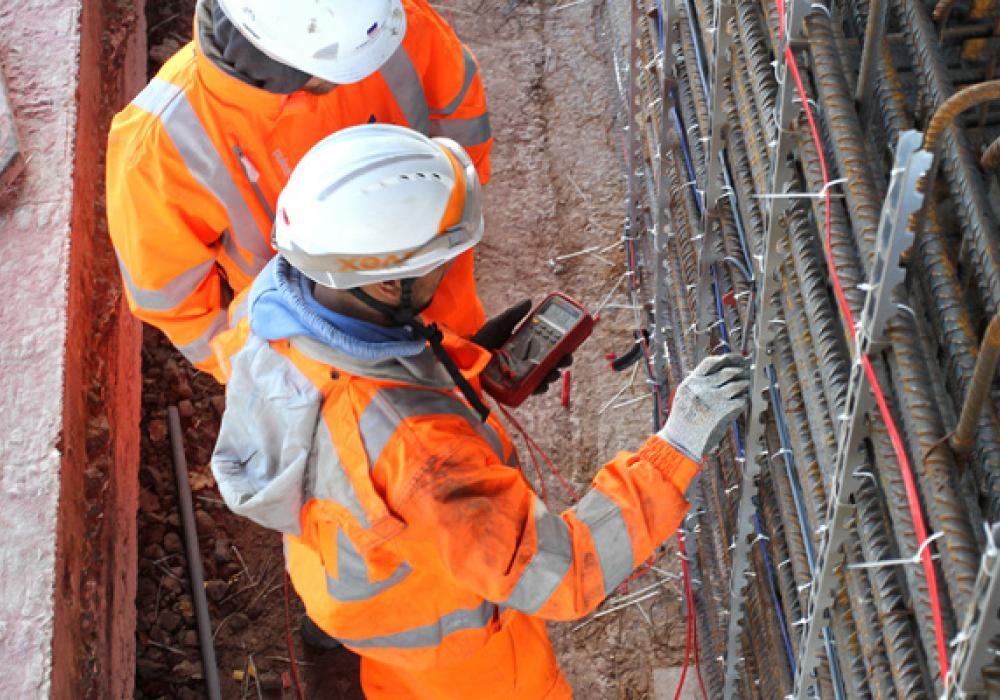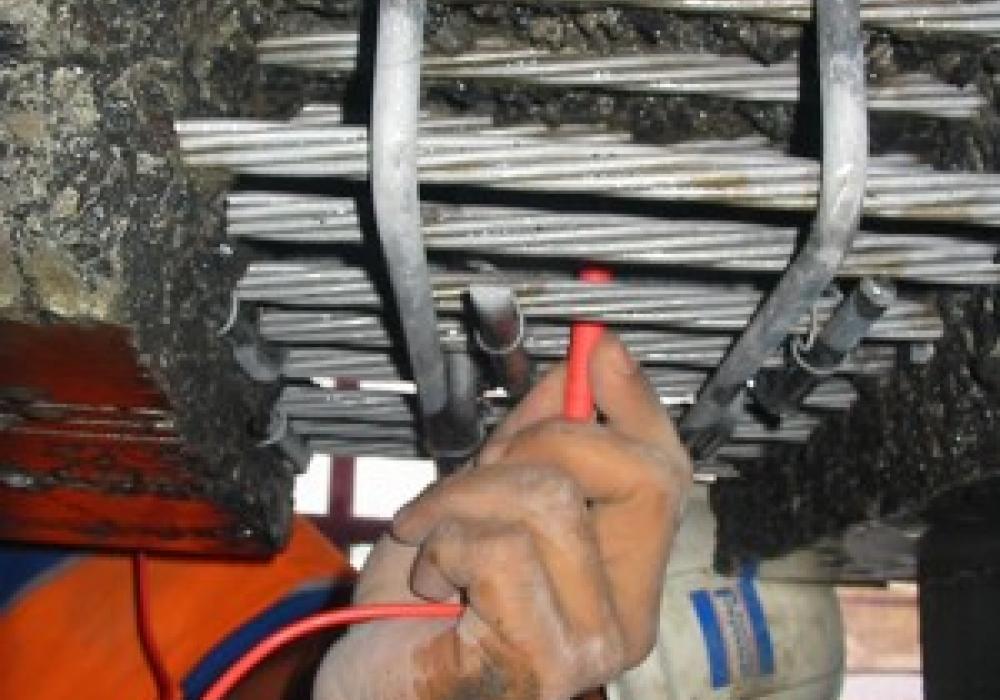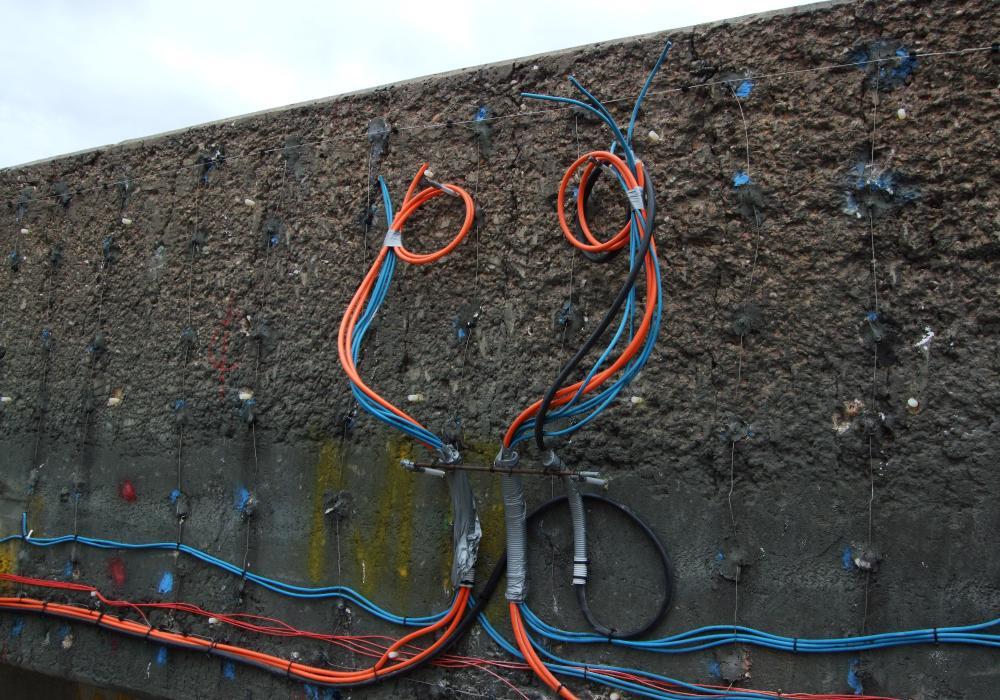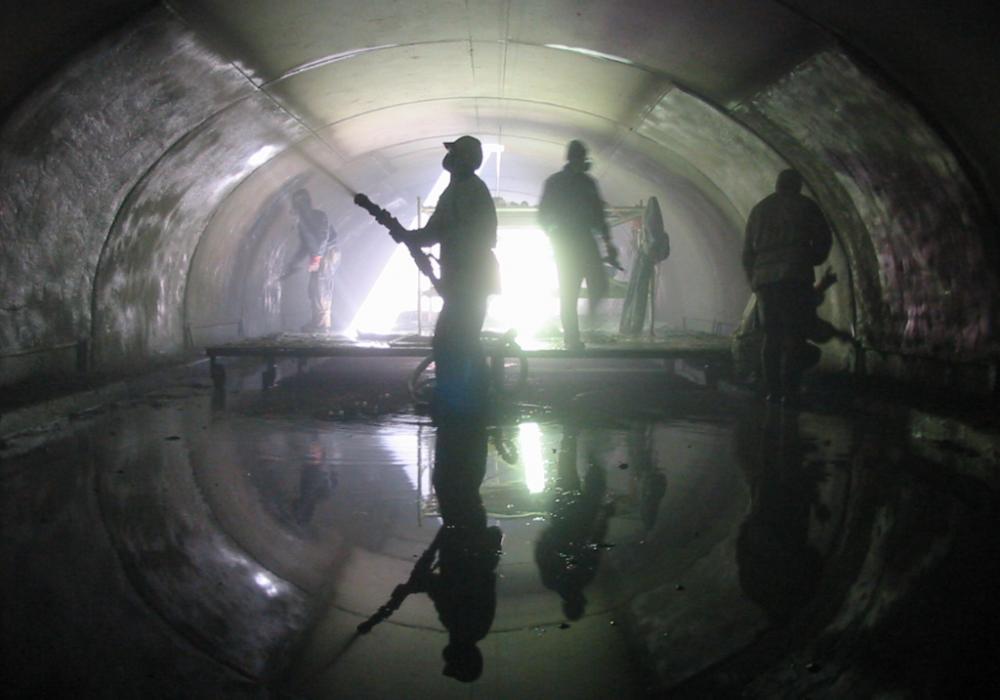Cathodic Protection
Cathodic Protection
One of the main causes of deterioration in concrete structures in reinforcement corrosion. Concrete provides an alkaline surrounding to steel reinforcement, but if the concrete is low quality or the alkalinity reduces, the reinforcement becomes susceptible to corrosion. Expansive forces caused by corrosion and rust formation cause concrete to crack and spall, inevitably leading to concrete repair.
There are two main causes of concrete deterioration: carbonation and chloride.
Carbonation is caused by atmospheric carbon dioxide dissolving in water to form carbonic acid. The acd then penetrates and reacts with concrete, reducing the pH value from 13 to 9. At the reinforcement layer, the steel doesn’t passivate and begins to corrode.
De-icing salts, seawater and marine aggregates are common sources of chlorides. If chlorides can penetrate down to the reinforcement layer, they will aggressively attack the steel, creating corrosion.
The rate of both carbonation and chloride corrosion depends on the concentration of carbon dioxide in the atmosphere, chlorides on the surface, concrete permeability, density and moisture content. Lower quality concrete will deteriorate much faster.
Conventional patch repairs to damaged concrete are unlikely to be successful where corrosion has progressed to the reinforcement layer. Cathodic protection works by passing a small electric current through the reinforcement layer, stopping existing corrosion and preventing future damage. It is a permanent solution that does not require reapplication and is suitable for severely damaged concrete – particularly suited to highway and marine structures where recontamination is likely.
We undertake condition assessments, design, supply and installation of cathodic protection systems.







